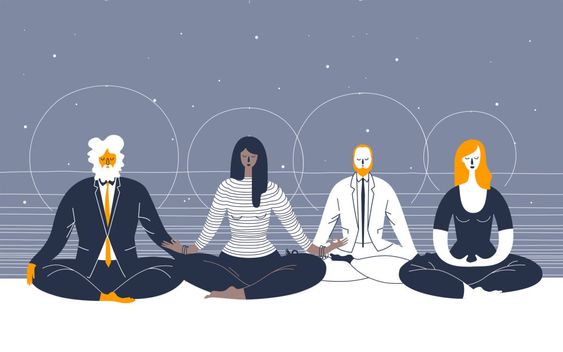Introduction
In our fast-paced world, finding moments of peace and tranquility can seem impossible. Our minds race with endless to-do lists, worries, and distractions, leaving us feeling stressed, anxious, and disconnected. This is where guided meditation comes in as a powerful tool for calming the mind, reducing stress, and improving overall well-being.

Unlike unguided meditation, where you navigate your thoughts and emotions independently, guided meditation provides a structured and supportive framework for your practice. Through the guidance of a trained practitioner or a recording, you are gently led through visualizations, breathing exercises, and mindfulness techniques that help quiet the internal chatter and cultivate a sense of inner peace.
Benefits of Guided Meditation
The benefits of incorporating guided meditation into your daily routine are numerous and far-reaching. Here are a few key advantages:
- Reduced Stress and Anxiety: Guided meditation helps to activate the body's natural relaxation response, reducing the production of stress hormones like cortisol.
- Improved Sleep Quality: Regular practice can calm the mind, release tension, and promote relaxation, making it easier to fall asleep and stay asleep.
- Enhanced Focus and Concentration: By calming the mental chatter and strengthening the ability to focus on the present moment, guided meditation can improve attention span and concentration.
- Increased Self-Awareness: Through guided meditation, you become more attuned to your thoughts, feelings, and bodily sensations without judgment, fostering a deeper understanding of yourself.
- Cultivating Emotional Regulation: Guided meditation provides tools and techniques for managing challenging emotions, increasing resilience and emotional stability.
Types of Guided Meditation
There are numerous types of guided meditations, each with a specific focus and intention. Some popular types include:
- Breath Awareness Meditation: Focuses on paying attention to the breath, noticing the sensations of each inhale and exhale.
- Body Scan Meditation: Involves bringing awareness to different parts of the body, noticing any sensations or tension.
- Visualization Meditation: Utilizes guided imagery to create mental pictures that evoke feelings of peace, relaxation, or joy.
- Loving-Kindness Meditation: Cultivates feelings of compassion, kindness, and acceptance towards oneself and others.
- Walking Meditation: Combines mindfulness with gentle movement, focusing on the sensations of each step and the environment around you.





